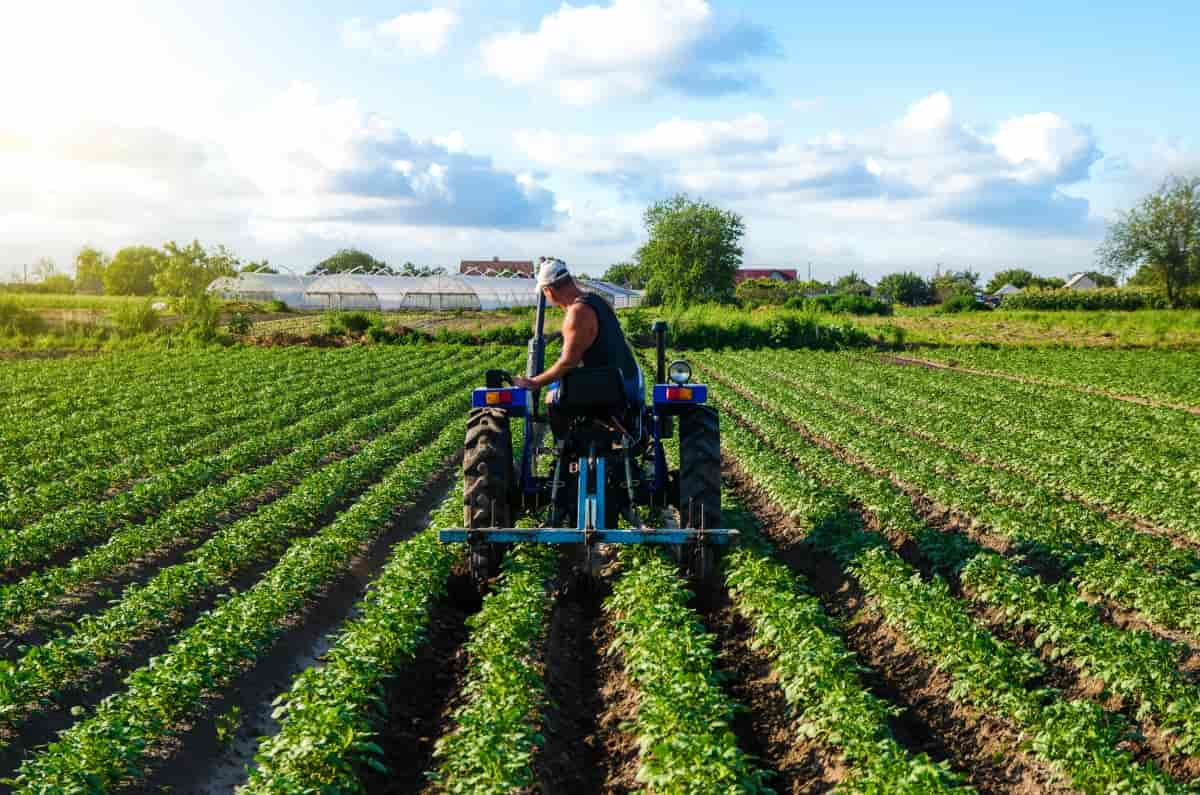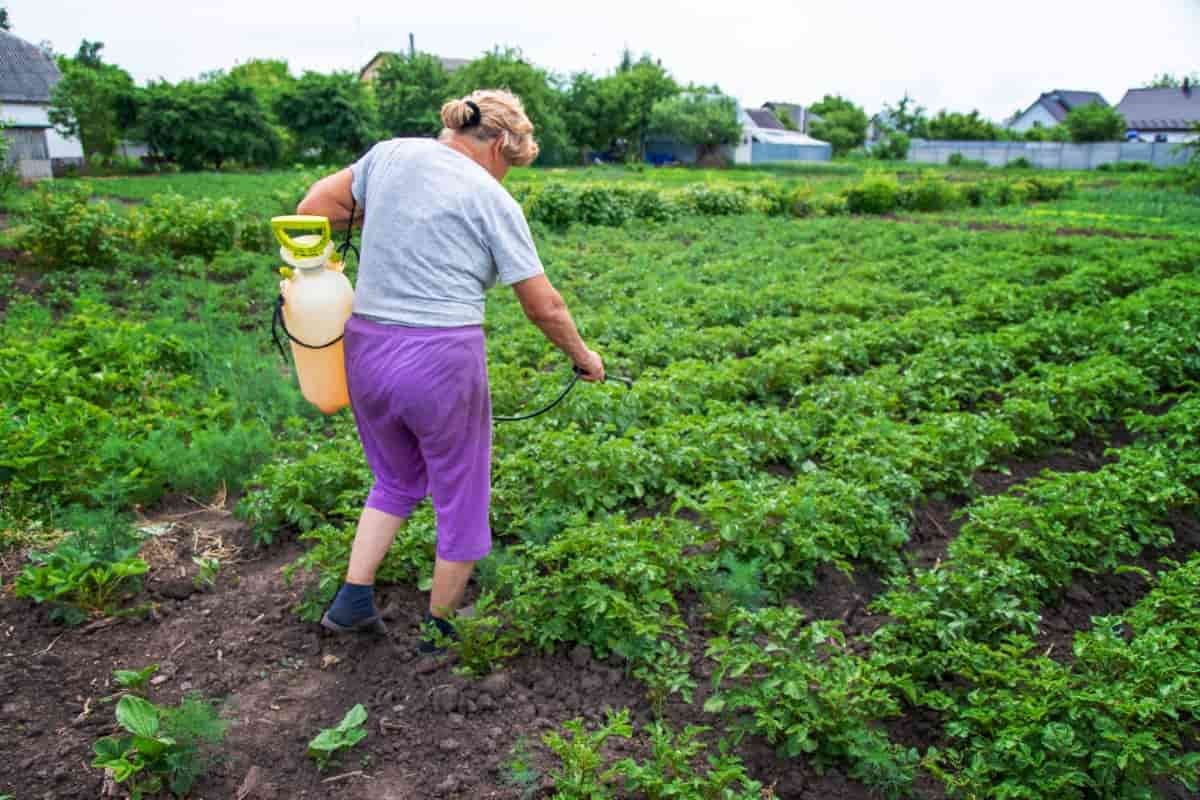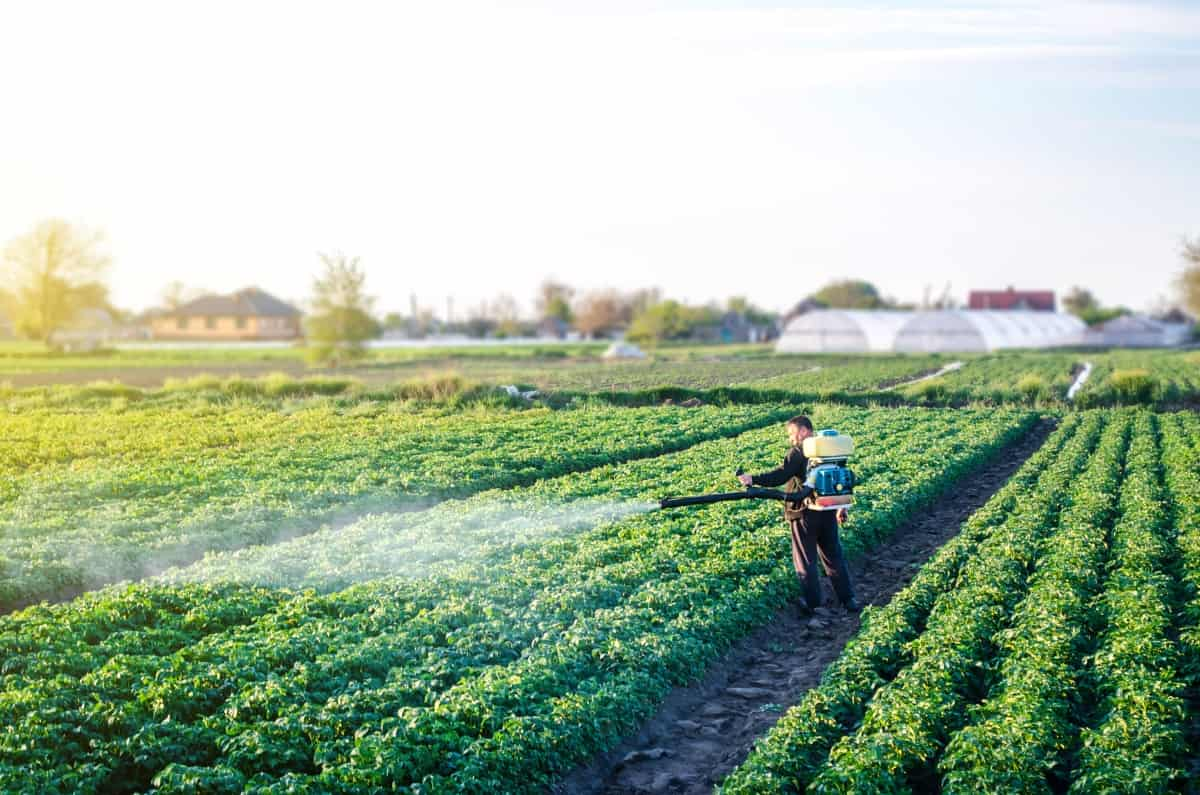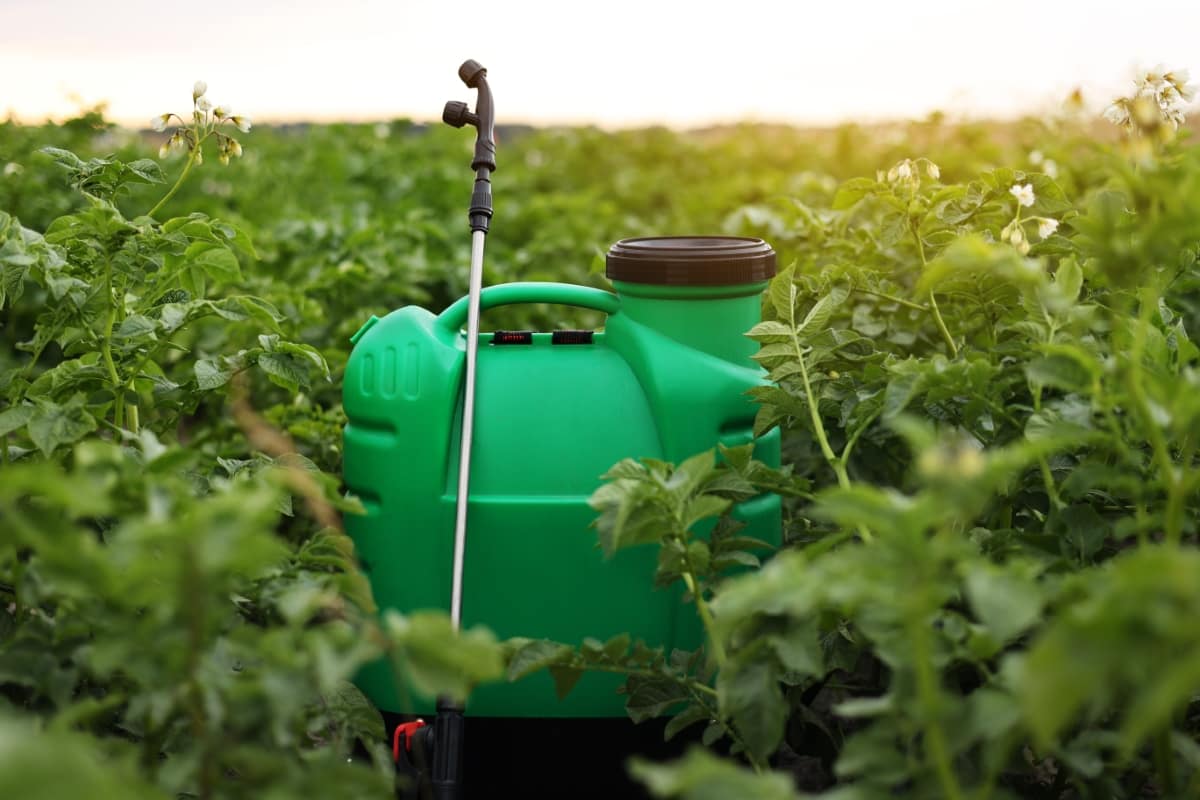Discover effective strategies to manage late blight in potatoes. Learn about its symptoms, causes, and treatments in our comprehensive guide, designed to help farmers safeguard their crops with scientifically backed methods for control and prevention.

How to Control Late Blight in Potato Crop
Identifying Symptoms
The fungus Phytophthora infestans, which causes late blight in potatoes, has specific symptoms. On leaves, there are initially dark, wet patches that quickly grow and become brown-black. These lesions often resemble concentric rings. A white, fuzzy growth on the undersides of leaves, particularly in humid conditions, indicates spore production.
As the blight spreads, leaves begin to wither and die, sometimes leading to the destruction of the plant. Tubers are not spared and have solid, reddish-brown sores under the skin that penetrate into the flesh. If these contaminated tubers are kept in storage, they decay and release an unpleasant odor. It is essential to identify late blight as soon as possible since it may spread quickly, particularly in chilly, wet settings, and it poses a danger to potato crops.
Understanding the Causes
The fungus-like organism Phytophthora infestans, which causes late blight in potatoes, prefers chilly, damp conditions to flourish. The wind, water, infected plants, and equipment are frequent carriers of this virus because of its rapid spread. The leaves and stems of infected plants have black, wet sores that cause significant crop loss.
Conditions that are conducive to late blight include high humidity and 12–24°C (54–75°F) temperatures. Using resistant potato types, crop rotation, and fungicide application are examples of prevention techniques. Given the right circumstances, the disease advances rapidly. Thus, early recognition is essential. By using integrated pest management and an understanding of environmental conditions, late blight may be successfully controlled, protecting potato production.
Exploring Treatment Options
- Resistant Varieties: Developing and planting potato varieties that are inherently resistant to late blight. such as Kufri Giriraj, Kufri Surya, and Kufri Lima.
- Chemical Treatments: Utilizing fungicides, which, when applied correctly, can effectively control the disease, use chemicals such as Mancozeb, Metalaxyl, and Cymoxanil
- Cultural Practices: Implementing agricultural practices like crop rotation and proper irrigation will reduce the likelihood of disease development.
- Biological Control: Exploring the use of natural predators or antagonists to the pathogen. Use Trichoderma spp., pseudomonas fluorescens, and Bacillus subtilis.
- Integrated Pest Management (IPM): Combining different methods for a more sustainable and effective approach.
In case you missed it: How to Grow Hydroponic Potatoes: A Comprehensive Guide

Implementing Management Strategies for Late Blight Control
- Soil Health: Maintain soil health through organic matter enrichment and balanced fertilization, strengthening plant resistance.
- Predictive Modeling: Utilize weather-based predictive models to forecast disease outbreaks, allowing for preemptive actions.
- Monitoring: Regularly monitor crops for early signs of late blight, enabling timely intervention.
- Sanitation: Remove and destroy infected plants to prevent the spread of the disease.
- Education: Keep farmers informed about the latest control methods and encourage community-wide efforts for effective disease management.
Assessing the Economic Impact
A fungal disease known as late blight has a worldwide impact on potato crops, inducing lesions on the stems and foliage, as well as diminishing photosynthesis and overall yield. In India, where potatoes are a staple food and the major source of income for millions of farmers, they pose a significant threat to food security and livelihoods. A recent study estimated that late blight’s economic impact on potato crops in India is Rs 130 crore.
Per year, including direct losses from reduced yield and quality as well as indirect costs from increased use of fungicides, labor, and transportation. It accounts for 16% of the total production costs of potato farming in India, making it one of the most expensive diseases to manage. Adopting resistant potato varieties, such as Kufri Surya, Kufri Girdhari, and Kufri Jyoti, could significantly reduce the economic burden of the disease.
Late blight could have a 65 crore per year economic impact reduction if 50% of Indian potato farmers adopted it. The CIP is working with national and state partners to disseminate these technologies and knowledge through various channels, hoping to enhance the resilience of potato crops to late blight, contributing to improved food security, income generation, and environmental sustainability in India.
Evaluating the Global Prevalence and Threat
Late blight, a devastating plant disease, affects crops like potatoes and tomatoes, causing annual losses of about $6.7 billion worldwide. The Phytophthora infestans disease, which resulted in the Irish potato famine of the 1840s and killed over a million people while forcing millions to emigrate, is to blame.
The International Potato Center (CIP) published a comprehensive assessment of late blight’s global distribution, impact, and management, revealing that its severity varies depending on climatic conditions, cropping systems, and control practices. The highest losses are found in tropical and subtropical regions, such as Africa, Asia, and Latin America, where humid and warm weather favors the pathogen’s development.
In temperate regions, such as Europe and North America, lower losses are due to the use of resistant varieties, fungicides, and disease forecasting tools. The study concludes that late blight remains a significant challenge for global food security and calls for more research and innovation to develop effective and sustainable solutions.
Reviewing the Role of Genetic Resistance
Phytophthora infestans, a fungus-like organism, is the cause of late blight, a disease that affects potato and tomato crops. Management strategies include cultural, chemical, and biological methods, with genetic resistance being a promising strategy. Resistance can be horizontal or vertical, with horizontal being more durable but incomplete. However, breeding for resistance in these crops is challenging due to their heterozygous nature and complex genomes.
In case you missed it: Potato Companion Plants: What to Plant and What Not to Plant with Potatoes

The pathogen, P. infestans, is variable and adaptable, making it difficult to identify and transfer resistance genes. Molecular markers, DNA sequences linked to resistance genes, can help breeders select resistant plants more efficiently and accurately. Genetic engineering, the manipulation of an organism’s DNA, can introduce new resistance genes from other species or synthetic sources. These tools can help develop new resistant varieties to reduce late blight losses.
Evaluating the Impact of Climate Change
Late blight, a disease affecting potatoes and tomatoes, is sensitive to temperature and humidity, and climate change may impact its occurrence and severity. Climate change modifies the temperature and precipitation patterns, affecting the environment’s suitability for late blight development and spread. Higher temperatures may reduce leaf wetness, while increased precipitation may increase rainfall frequency and intensity, facilitating spore dispersal and infection.
However, increased precipitation may also reduce irrigation water availability, affecting crop growth and stress. Climate change could increase late blight risk in most locations, especially in northern Europe, but could reduce it by up to 20% in southern Europe. This impacts crop management and food security, potentially resulting in substantial yield losses and quality reductions, potentially costing $10 billion to $15 billion per year for potato producers and consumers. Farmers may adopt more intensive management practices, but these may also entail additional costs and challenges.
In case you missed it: 10 Common Problems with Garden-grown Potatoes: Treatment and Solutions

Conclusion
Controlling late blight in potatoes involves early detection of symptoms, understanding causes, applying effective treatments, and adopting comprehensive management strategies. These steps are crucial for healthy crops and preventing the spread of this destructive disease.
- Feed Your Flock for Less: Top 10 Tips to Save on Chicken Feed
- Ultimate Guide to Ossabaw Island Hog: Breeding, Raising, Diet, and Care
- Hatching Answers: The Top 10 Reasons Your Chickens Aren’t Laying Eggs
- Eggs and Economics: Breaking Down the Cost of Raising Backyard Chickens
- Defend Your Greens: Proven Methods to Keep Iguanas Out of Your Garden
- Ultimate Guide to Cinnamon Queen Chicken: A Comprehensive Guide for Beginners
- Ultimate Guide to California Tan Chicken: Breeding, Raising, Diet, Egg-Production and Care
- Ultimate Guide to Marsh Daisy Chicken: Breeding, Raising, Diet, and Care
- 10 Types of Chicken Farming Businesses You Can Start for Profits